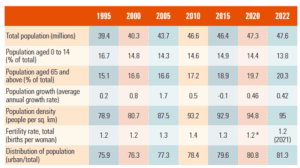What if Target Date Funds Used Annuities?

What You Need to Know
Target date funds are a highly popular default investment in 401(k) plans.
Researchers suggest TDFs could be improved by incorporating periodic annuity purchases as investors approach retirement.
The spreading out of annuity purchases helps address adverse selection issues and sequence risk, according to the analysis.
A new paper published by the National Bureau of Economic Research evaluates a proposed variant of the popular target date fund vehicle used in employer-sponsored retirement savings plans, with the goal of determining whether redirecting allocations from bonds to deferred income annuities boosts participant outcomes.
The analysis was put together by John Shoven of the Department of Economics at Stanford University and Daniel Walton of Uber Technologies (formerly with Stanford University). The duo asks what would happen if, rather than increasing the allocation to bond funds as retirement approaches, a TDF instead gradually purchased deferred life annuities beginning at age 50.
In the particular straw model target retirement fund examined in the paper, the defined contribution participant makes deferred life annuity purchases at ages 50, 52, 54, 56, 58, 60 and 62.
Ultimately, the analysis compares how this participant would fare compared with someone who stays with a traditional TDF until retirement and only then buys an immediate life annuity. The main result from the paper is that buying retirement annuities in advance is generally superior to sticking with standard TDF until retirement and then buying an immediate annuity.
Setting Up the Analysis
According to the oft-cited Fact Book published by the Investment Company Institute, TDFs have been a huge market success in defined contribution retirement plans. The ICI data shows their share of 401(k) assets has grown from a mere 8% in 2007 to 31% in 2019, thanks in large part to the use of TDFs by employers as a default investment option. As of year-end 2019, 60% of 401(k) participants had at least some money in a TDF, while 87% of 401(k) plans offered TDFs.
As Shoven and Walton point out, the distinguishing feature of TDFs is the provision of a dynamic asset allocation that depends on only one thing — the participant’s age. As such, TDFs are offered with a range of target retirement dates such as 2020, 2025, 2030, 2035, going all the way to 2065.
In funds with a more distant target date, such as 2045 and beyond, the portfolio is roughly 90% to 95% invested in equities. For the nearer target dates, equity exposure is reduced and bond exposure is increased, with the goal of helping investors who are near retirement to protect their accumulated assets.
With these facts in mind, Shoven’s and Walton’s analysis asks whether it would be superior to add deferred life annuities instead of bond funds beginning at age 50. Their model directs all of a theoretical 401(k) plan participant’s contributions to equities at the start of the savings effort, and it then devotes 10% of accumulated assets to the purchase of a deferred life annuity at 50, 52, 54, 56, 58, 60 and 62.
Each of these seven purchases redirects 10% of the accumulated equity balance to a deferred annuity at the time of purchase. To determine the price of the annuities, the researchers used online quotations from a well-known annuity pricing service.
Other key inputs are the fact that the theoretical participant contributes 9% of salary starting at age 35, and the employee retires on their 65th birthday, with each of the deferred annuity payment streams commencing at 65. The model utilizes 1,000 possible 30-year futures for stock returns, bond fund returns and Treasury interest rates.





